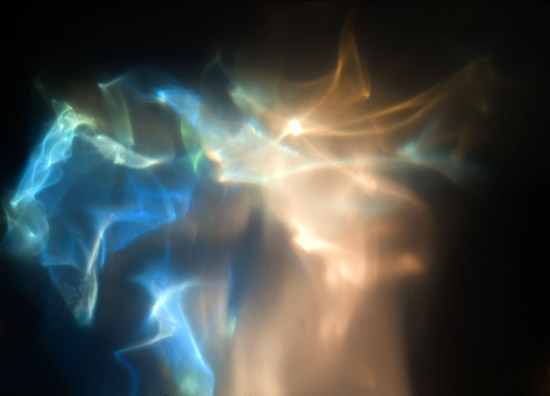Lab, factory, studio...

Frank Malina : Flowers (1964).
Last revised 10/13/2014. Return to Major concepts. See transmedia.
Work in progress
Historically, two labs played an important role in the development of digital arts :
Bell Labs
MIT Media Lab.
Different kinds of "labs"
Fablab
- A fab_lab is a place, a tutorial or a coherent set of software products for design and making of objects, including digitally controlled machines and robots.
< Etat des lieux et typologie des ateliers de fabrication numérique : Fab Labs Ministère de l'économie, de l'industrie et du numérique) http://www.entreprises.gouv.fr/secteurs-professionnels/etat-des-lieux-et-typologie-des-ateliers-fabrication-numerique-fab-labs
Living lab
- See Living lab, the definition of which is rather wide.
Media lab
- The term was created by MIT and is a proper noun, but In 2011, a special issue of MCD, signed by Catherine Lenoble, (March-April-May) takes Media Lab as a common noun and draws a cartography of it. See our geography.
Senior lab
- See Senior Lab, which, on 4/2011, looks like a La Cantine (Paris) exclusivity.
- See Bricolab, aiming to "objects reappropriation".
Fablab. Abbreviation for Fabrication Laboratory. See lab. Wikipedia
- See Make Magazine.
- A critical standpoint, 2 and a half pages by Xavier de Jarcy in Télérama, 08/29/2012.
- These workshops may play an important role in severa forms of art (scupture, interaction...) which require costly devices, exceeding the resources of an individual artist. And they are dialogue, mutual help if not activism places. See physical computing.
- The technical and facilities level of fablabs is very variable. A minima, they are a small local club, led by a dynamic individual, with some Arduino cards and some hardware. You can call that a bricolab. At the other end, a fablab is a large structure, an association of several research laboratories and industrial corporations, endowed with heavy equipment and specialized personnel.
- Its trend that started in the 2010's. It has certainlay deep socio-psychologic roots: a way to address the complexity of modern world, the abstraction of virtual world, the fears awaken by the coming singularity. Ian Bogost, for example, in his Alien Phenomenology, of What It's Like to Be a Thing, (University of Minnesota Press 2012) pushes professional thinkers to build objects by themselves, to become engineers engaged in construction as well as in thinking and writing.
-
- "Superior certficates of make do" says (our translation) Cécile Bothorel, dans Le Monde, 2/25/2012 about a "neo-craftmanship space" opened by the University of Cergy Pontoise.
Let us quote, in France
-Laboratoire ouvert lyonnais,
-
Université de Cergy Pontoise (Le Monde, 2/25/2012)
- Digitarti (rue des Ecluses Saint-Martin in Paris).
DICCAN'S PARTNERS
